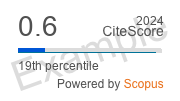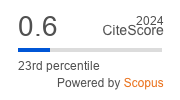Macrophages of the of the axis “heart-spleen-brainkidney” in patients with fatal myocardial infarction complicated by cardiogenic shock
https://doi.org/10.29001/2073-8552-2025-40-3-57-67
Abstract
Introduction. The systemic inflammatory response (SIR) that occurs in response to ischemia in patients with myocardial infarction (MI) is one of the significant mechanisms of the pathogenesis of this disease, determining its course and outcomes. The content of one of the key factors in the inflammation and regeneration process – macrophages (MFs), both in the myocardium and in target organs, as well as the relationship between the concentration of proand anti-inflammatory MFs in the early and late stages of infarction with its adverse outcomes remain poorly understood.
Aim: To comprehensively study the characteristics of macrophage infiltration of myocardial tissue, kidneys, brain and spleen in patients who died from myocardial infarction-associated shock (MI CS), and to characterize their relationship with the clinical profile of the patient.
Material and Methods. We included 25 patients with fatal MI CS. We examined fragments of spleens (red (RP) and white pulp (WP)), myocardium, kidneys and brain taken during the autopsy. Macrophage infiltration of the tissues was assessed by immunohistochemistry with usage of antibodies for the general marker of MFs – CD68 and to the M2 MFs markers – CD163, CD206, Stabilin-1.
Results. The maximum count of all studied cells was found in the RP: CD68+ 898 (807; 1049), CD163+ 898 (807; 1049), stabilin 1+ 807 (526; 985), CD206+ 11 (9; 19) cells. However, the content of all the studied cells in the RP and WP remained consistently high relative from the early to the late period of MI. In the myocardial (infarcted area), on the contrary, the concentration of all the studied cells increased relative from the early to the late period of MI: CD68+ from 59 (52; 95) to 376 (136; 634), CD163+ from 82 (34; 285) to 697 (545; 982), CD206+ from 21 (12; 43) to 99 (31; 249), stabilin-1+ from 0 (0; 1) to 126 cells (p < 0.05). The only cell type among those studied by us that showed a decrease in its concentration relative to the early to the late period of MI were CD206+ cells in the kidneys: from 6 (5; 8) to 2 (1; 2) (p < 0.005). When analyzing interorgan correlations, attention is drawn to the large number of interorgan interactions at the cellular level, mainly in the early post-infarction period. The correlation was shown between CD163+ cells in brain and age (r = –0.7, p = 0.0006).
Conclusions. A comprehensive analysis of macrophage infiltration of myocardium, kidneys, brain and spleen in patients with fatal MI CS showed that the maximum, consistently high content of the studied cells – CD68+, CD163+, CD206+, stabilin-1+ is characteristic of one of the leading organs of immunogenesis the spleen. The active course of SIR in the myocardium in patients with MI was reflected in an increase in the content of all studied cell types in the infarct area of myocardium, while a decrease in the regenerative capacity in patients with MI was reflected in a decrease in the content of CD206+ cells in the kidneys. A large number of interorgan relationships between MFs in the early period of MI, as well as the presence of relationships between the concentration of MFs in tissues and clinical data, confirms the value of conducting a subsequent comprehensive analysis of the cellular composition of infarcted myocardial tissue in combination with the dynamics of the level of serum markers reflecting the activity of the SIR in patients with MI CS.
About the Authors
M. A. KerchevaRussian Federation
Maria A. Kercheva - Cand. Sci. (Med.), Head of the Laboratory of Infarction-Associated Shock, Cardiology Research Institute, Tomsk NRMC, Tomsk, Russia; Associate Professor, Department of Cardiology, SSMU.
A. E. Gombozhapova
Russian Federation
Aleksandra A. Gombozhapova - Research Scientist, Department of Emergency Cardiology, Cardiology Research Institute, Tomsk NRMC, Tomsk, Russia; Associate Professor, Department of Cardiology, SSMU.
111a, Kievskaya str., Tomsk, 634012; 2, Moscovsky Trakt, Tomsk, 634055
I. V. Stepanov
Russian Federation
Ivan V. Stepanov - Cand. Sci. (Med.), Head of the Pathology Department, Cardiology Research Institute, Cardiology Research Institute, Tomsk NRMC.
111a, Kievskaya str., Tomsk, 634012
V. V. Ryabov
Russian Federation
Vyacheslav V. Ryabov - Dr. Sci. (Med.), Professor, Corresponding Member, Russian Academy of Siences, Deputy Director for Scientific and Medical Work, Cardiology Research Institute, Tomsk NRMC; Head of the Department of Cardiology, SSMU.
111a, Kievskaya str., Tomsk, 634012; 2, Moscovsky Trakt, Tomsk, 634055
References
1. Ong S.B., Hernández-Reséndiz S., Crespo-Avilan G.E. Mukhametshina R.T., Kwek X.Y., Cabrera-Fuentes H.A. et al. Inflammation following acute myocardial infarction: Multiple players, dynamic roles, and novel therapeutic opportunities. Pharmacol. Ther. 2018;186:73–87. https://doi.org/10.1016/j.pharmthera.2018.01.001.
2. Kologrivova I., Shtatolkina M., Suslova T., Ryabov V. Cells of the immune system in cardiac remodeling: main players in resolution of inflammation and repair after myocardial infarction. Front. Immunol. 2021;12:664457. https://doi.org/10.3389/fimmu.2021.664457.
3. Halade G.V., Norris P.C., Kain V., Serhan C.N., Ingle K.A. Splenic leukocytes define the resolution of inflammation in heart failure. Sci. Signal. 2018;11(520):eaao1818. https://doi.org/10.1126/scisignal.aao1818.
4. Nahrendorf M., Pittet M.J., Swirski F.K. Monocytes: protagonists of infarct inflammation and repair after myocardial infarction. Circulation. 2010;121(22):2437–2445. https://doi.org/10.1161/CIRCULATIONAHA.109.916346.
5. Matter M.A., Paneni F., Libby P., Frantz S., Stähli B.E., Templin C. et al. Inflammation in acute myocardial infarction: the good, the bad and the ugly. Eur. Heart J. 2024;45(2):89–103. https://doi.org/10.1093/eurheartj/ehad486.
6. Huang S., Frangogiannis N.G. Anti-inflammatory therapies in myocardial infarction: failures, hopes and challenges. Br. J. Pharmacol. 2018;175(9):1377–1400. https://doi.org/10.1111/bph.14155.
7. Kapur N.K., Thayer K.L., Zweck E. Cardiogenic shock in the setting of acute myocardial infarction. Methodist DeBakey Cardiovasc. J. 2020;16(1):16–21. https://doi.org/10.14797/mdcj-16-1-16.
8. Panteleev O.O., Ryabov V.V. Cardiogenic shock: What’s new? Siberian Journal of Clinical and Experimental Medicine. 2021;36(4):45–51. (In Russ). https://doi.org/10.29001/2073-8552-2021-36-4-45-51.
9. Geppert A., Huber K. Inflammation and cardiovascular diseases: lessons that can be learned for the patient with cardiogenic shock in the intensive care unit. Curr. Opin. Crit. Care. 2004;10(5):347–353. https://doi.org/10.1097/01.ccx.0000139364.53198.fd.
10. Heusch G. The spleen in myocardial infarction. Circ. Res. 2019;124(1):26–28. https://doi.org/10.1161/CIRCRESAHA.118.314331.
11. Kercheva M.A., Ryabov V.V., Gombozhapova A.Е., Trusov A.A., Stepanov I.V., Kzhyshkowska Yu.G. Place of the cardiosplenic axis in the development of fatal myocardial infarction. Russian Journal of Cardiology. 2023;28(5):5411. (In Russ.). https://doi.org/10.15829/15604071-2023-5411.
12. Kercheva M.A., Ryabov V.V., Rebenkova M.S., Kim B., Ryabtseva A.N., Kolmakov A.A., Gombozhapova A.E., Kzhyshkowska J.G. Features of renal macrophage infiltration in patients with myocardial infarction. Siberian Journal of Clinical and Experimental Medicine. 2021;36(2):61– 69. (In Russ.) https://doi.org/10.29001/2073-8552-2021-36-2-61-69.
13. Fujiu K., Shibata M., Nakayama Y., Ogata F., Matsumoto S., Noshita K. et al. A heart-brain-kidney network controls adaptation to cardiac stress through tissue macrophage activation. Nat. Med. 2017;23(5):611–622. https://doi.org/10.1038/nm.4326.
14. Thygesen K., Alpert J.S., Jaffe A.S., Chaitman B.R., Bax J.J., Morrow D.A. et al. Fourth Universal Definition of Myocardial Infarction (2018). J. Am. Coll. Cardiol. 2018;72(18):2231–2264. https://doi.org/10.1016/j.jacc.2018.08.1038.
15. Ponikowski P., Voors A.A., Anker S.D., Bueno H., Cleland J.G.F., Coats A.J.S. et al. 2016 ESC Guidelines for the diagnosis and treatment of acute and chronic heart failure: The Task Force for the diagnosis and treatment of acute and chronic heart failure of the European Society of Cardiology (ESC) Developed with the special contribution of the Heart Failure Association (HFA) of the ESC. Eur. Heart J. 2016;37(27):2129– 2200. https://doi.org/10.1093/eurheartj/ehw128.
16. Jäckel M., Zotzmann V., Wengenmayer T., Duerschmied D., Biever P.M., Spieler D., et al. Incidence and predictors of delirium on the intensive care unit after acute myocardial infarction, insight from a retrospective registry. Catheter. Cardiovasc. Interv. 2021;98(6):1072–1081. https://doi.org/10.1002/ccd.29275.
17. Moras E., Yakkali S., Gandhi K.D., Virk H.U.H., Alam M., Zaid S. et al. Complications in acute myocardial infarction: navigating challenges in diagnosis and management. Hearts. 2024;5(1):122–141. https://doi.org/10.3390/hearts5010009.
18. Kzhyshkowska J. Multifunctional receptor stabilin-1 in homeostasis and disease. Sci. World J. 2010;10:2039–2042. https://doi.org/10.1100/tsw.2010.189.
19. Chistiakov D.A., Killingsworth M.C., Myasoedova V.A., Orekhov A.N., Bobryshev Y.V. CD68/macrosialin: Not just a histochemical marker. Lab. Invest. 2017;97:4–13. https://doi.org/10.1038/labinvest.2016.116.
20. Fischer-Riepe L., Daber N., Schulte-Schrepping J., Véras De Carvalho B.C., Russo A., Pohlen M. et al. CD163 expression defines specific, IRF8-dependent, immune-modulatory macrophages in the bone marrow. J. Allergy Clin. Immunol. 2020;146(5):1137–1151. https://doi.org/10.1016/j.jaci.2020.02.034.
Review
For citations:
Kercheva M.A., Gombozhapova A.E., Stepanov I.V., Ryabov V.V. Macrophages of the of the axis “heart-spleen-brainkidney” in patients with fatal myocardial infarction complicated by cardiogenic shock. Siberian Journal of Clinical and Experimental Medicine. 2025;40(3):57-67. (In Russ.) https://doi.org/10.29001/2073-8552-2025-40-3-57-67





.png)





























